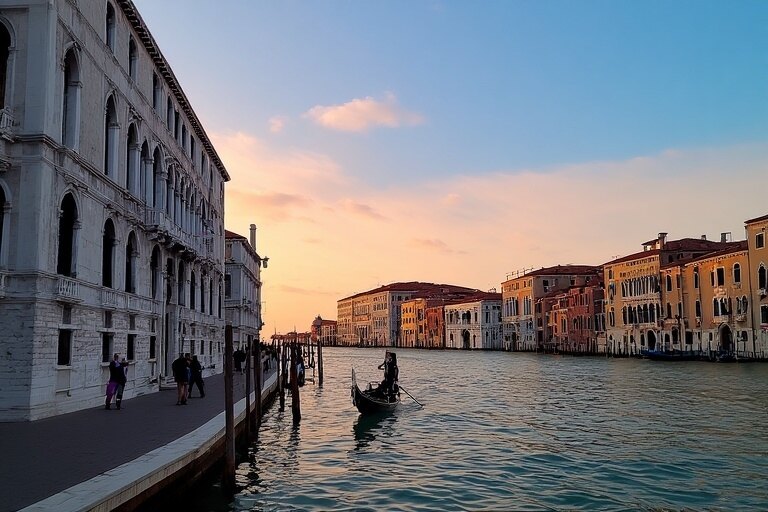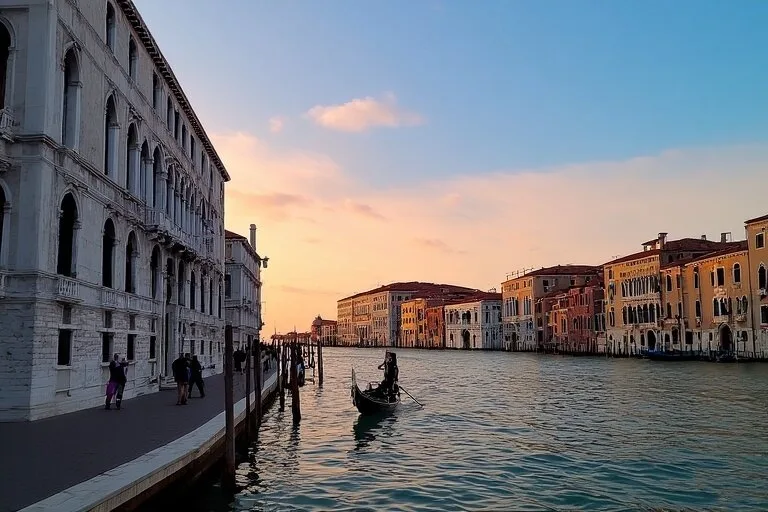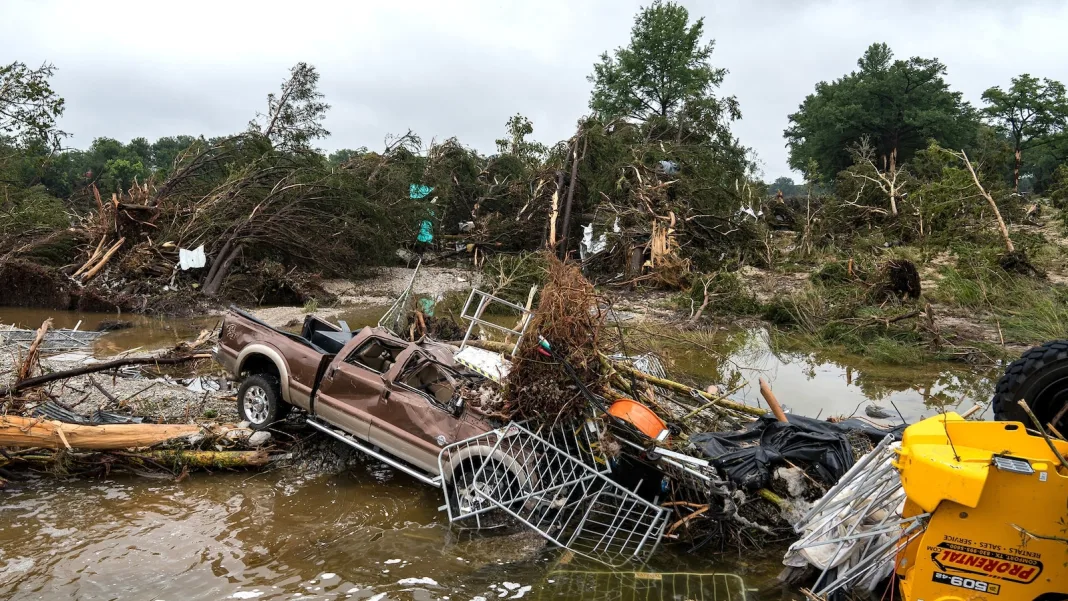Published on
August 13, 2025

Following ongoing safety assessments throughout Europe, the Australian government is encouraging travelers to adopt an elevated level of caution when journeying to Germany, Spain, Italy, Switzerland, Portugal, Denmark, Greece, Norway, and other key destinations. Growing threats related to terrorism, adverse weather, and opportunistic crime in popular areas prompt authorities to stress the importance of remaining vigilant and adhering to the instructions of local agencies. The current landscape—which features frequent protests, transport disruptions, and shifting weather patterns—has resulted in reinforced safety measures for Australians mapping out visits, enabling them to appreciate the region while prioritizing their personal safety.
As international travel continues to rebound across Europe, Australian citizens are advised to exercise heightened caution when visiting key destinations. The Australian government has issued an urgent travel advisory for Germany, Spain, Italy, Switzerland, Portugal, Denmark, Greece, Norway, and other popular European nations due to ongoing safety concerns. Travelers are urged to remain vigilant and adhere to local authorities’ instructions for a safe journey. The following country-specific breakdown provides detailed insights into the safety issues travelers may face across these regions.
Germany
Germany continues to experience an elevated threat level due to terrorism risks. Recent attacks have used vehicles and knives, particularly in crowded spaces like public transport stations, airports, and tourist areas. While violent crime is generally low, petty crime such as pickpocketing and theft remains a concern, especially in busy city centers and transit hubs. In addition to general safety warnings, travelers are urged to avoid crowded areas and remain cautious of suspicious activities. The upcoming implementation of the European Entry/Exit System (EES) will also lead to longer queues at borders, as travelers must provide biometric data (fingerprints and photographs). Therefore, travelers should allow extra time for border procedures.
Spain
Spain has raised its terrorism threat level to ‘high’, with attacks posing a potential risk to tourists in major cities like Madrid, Barcelona, and Ibiza. Public spaces, transport hubs, and crowded tourist spots are most vulnerable. Demonstrations, strikes, and protests, which often disrupt transport and public services, are also common. Although such events are usually peaceful, they can escalate into violence, affecting travelers’ safety. Petty crimes such as pickpocketing, bag snatching, and theft from cars are widespread in tourist hotspots. During the summer, the risk of wildfires also increases, especially in rural areas. Travelers should monitor local news and adhere to warnings regarding fire risks.
Italy
In Italy, vehicle break-ins and thefts are a major concern, particularly for tourists. Australians have reported incidents of stolen passports and valuables from parked cars, private vans, and tour buses. Travelers are urged not to leave their belongings unattended. Petty crime such as pickpocketing is also common, particularly in popular tourist areas like Rome, Florence, and Milan. Italy is also at risk of bombings against political targets, making public demonstrations and protests risky for visitors. Furthermore, the country is prone to seismic activity and volcanic eruptions, especially in southern regions. Travelers should always be aware of emergency procedures and avoid protests or demonstrations.
Switzerland
Switzerland is generally considered a safe country, but it is not without its risks. The increase in petty crime is becoming a concern, particularly in busy tourist locations and on public transport. Travelers are advised to keep their belongings close, especially in high-traffic areas such as Zurich and Geneva. The Swiss Alps, while a popular tourist destination, present inherent dangers such as avalanches, flash floods, and rockslides. Skiers and mountaineers should always follow official safety guidelines and stay on marked trails. Although violent crime is rare, Switzerland’s vulnerability to natural disasters like earthquakes and heavy snowstorms requires vigilance, particularly in alpine regions.
Portugal
Portugal has a national terrorism alert level of ‘significant’, signaling a moderate risk to travelers. Public demonstrations, strikes, and protests are not uncommon, and while they are often peaceful, they can occasionally escalate into violent confrontations. Petty crime, such as pickpocketing and theft, is a frequent issue in tourist areas, especially in Lisbon, Porto, and on the Algarve coast. Travelers should ensure that valuables are stored securely and remain vigilant when in public places, such as beaches, tourist spots, and public transport. Additionally, the country experiences high temperatures and bushfires during the summer months, posing further risks. Winter flooding can also disrupt transport, so it’s essential to stay informed about local weather conditions.
Denmark
Denmark has an elevated domestic terrorism threat level, with the potential for attacks in public spaces, especially in areas frequented by tourists such as Copenhagen’s Tivoli Gardens and Nyhavn. Travelers should be particularly cautious in crowded areas and stay alert for any suspicious activity. While Denmark has relatively low crime rates, petty theft is still a concern, particularly in busy tourist districts and on public transport. Visitors are advised to avoid large demonstrations or protests, which can sometimes become violent. Additionally, Denmark’s variable weather conditions, including sudden storms, require travelers to remain updated on local forecasts and warnings.
Greece
Greece faces an ongoing risk of wildfires, particularly during the summer months, when extreme heat can cause rapid and unpredictable fires near tourist locations and major cities. Travelers are advised to follow local evacuation orders and avoid areas that are at risk. Greece is also prone to seismic activity, including earthquakes and volcanic eruptions, with popular destinations such as Santorini and Crete being vulnerable. In addition to natural hazards, petty crime remains a significant issue in tourist areas, with pickpocketing, bag snatching, and theft from hotel rooms being reported regularly. Travelers should also exercise caution when engaging in outdoor activities like quad biking and motorcycling, as accidents have led to serious injuries and fatalities in the past.
Norway
Norway’s terrorism threat level has been downgraded to ‘moderate’, though travelers should still remain alert. The risk of extremist attacks continues, particularly targeting Jewish and Israeli locations. Norway’s low crime rate means that violent crime is relatively rare, but gang-related incidents and petty theft can occur, especially in tourist-heavy areas such as Oslo. Outdoor activities in Norway, including mountaineering and skiing, can be dangerous due to avalanches and sudden weather changes. Additionally, Norway’s remote Arctic regions, including Svalbard, can be risky for travelers due to polar bear encounters. Travelers must heed local safety guidelines when venturing into these areas.
Poland
Poland has seen a rise in safety risks, particularly for those traveling near the Ukrainian border. The ongoing conflict in Ukraine has made certain regions more volatile, and it’s crucial to avoid traveling to areas near the conflict zone. While terrorism is not a significant concern, travelers should remain cautious of petty crime, including pickpocketing and theft from vehicles. Drink spiking is also a risk in nightlife areas, so visitors should never leave their drinks unattended. Furthermore, Poland’s busy streets and highways can be hazardous, especially when crossing roads. Travelers should be cautious and use pedestrian crossings to ensure safety.
Sweden
Sweden’s domestic terrorism threat is currently at an ‘elevated’ level, and while violent incidents are rare in tourist locations, travelers are encouraged to exercise caution. Petty theft is common, and travelers should watch out for pickpockets and bag snatchers, particularly in busy cities like Stockholm. The risk of gang-related violence has also increased in certain parts of Sweden, and visitors are advised to stay away from areas where tensions may run high. Sweden’s harsh winter conditions, with heavy snowfalls and freezing temperatures, can create challenging travel conditions. Travelers are advised to monitor weather reports and be prepared for extreme cold, which can disrupt transportation and public services.
Finland
Finland’s terrorism threat level remains ‘elevated’, meaning that the risk of an attack is higher than normal. However, violent crime is generally rare, and Finland remains one of the safest countries in Europe. Petty crime, such as pickpocketing, can occur in tourist areas, but it is less prevalent compared to other European countries. Finland’s extreme winter conditions, including severe snowstorms and cold temperatures, pose a significant risk for travelers, particularly in the northern parts of the country. Travelers are urged to check weather conditions before embarking on any outdoor adventures. The risk of rockslides, floods, and strong winds can also affect certain regions, making it important to stay informed about local safety alerts.
Netherlands
The Netherlands’ terrorism threat level is substantial, with public places, transport hubs, and tourist attractions remaining potential targets. Travelers should be cautious in busy areas such as Amsterdam’s city center and train stations. Petty crime, particularly pickpocketing and bag snatching, is common, and tourists should be cautious of thieves who pose as plainclothes police officers. Drink spiking is also a concern, especially in bars and clubs. Travelers should avoid leaving drinks unattended or accepting drinks from strangers. The country is also susceptible to flooding, particularly in the winter months, and travelers should monitor local news for weather-related updates.
Hungary
Hungary’s security situation remains stable, but travelers should avoid crossing into Ukraine due to the ongoing conflict. While Hungary is relatively safe, there are reports of petty crime, particularly in crowded tourist areas. Travelers should exercise caution when using public transport and in areas with high foot traffic. The country has also passed laws that could impact LGBTQIA+ travelers, particularly in the context of Pride events. Visitors should be aware of potential risks related to demonstrations and protests, and avoid areas where such gatherings may turn violent. Drink spiking and overcharging in bars and restaurants can also pose risks.
Iceland
Iceland’s natural environment presents unique risks, particularly from its ongoing volcanic activity on the Reykjanes Peninsula. Travelers should avoid areas near the eruption sites, as volcanic gas clouds could pose serious health risks. Iceland’s unpredictable weather patterns, including snowstorms, sandstorms, and ash clouds, can create dangerous conditions, especially in remote areas. Petty theft, although rare, has been reported, and travelers should take precautions to safeguard their personal belongings. Iceland’s remote Arctic locations also carry inherent risks, such as encounters with polar bears in the Svalbard region. Visitors are advised to be cautious in these areas and follow safety guidelines provided by local authorities.
Australian authorities are advising travelers heading to Germany, Spain, Italy, Switzerland, Portugal, Denmark, Greece, Norway, and various other European locations to keep their wits about them, citing elevated risks tied to terrorism, earth-related hazards, and low-level theft.
The travel notice underscores the importance for every Australian to check alerts, stay watchful, and act on sensible safety measures while on the continent. Although Europe dazzles with its landscapes and deep history, safety issues persist in pockets. Following local advice, registering with embassies, and updating personal contacts across 2025 will help forge smoother, secured travels. Keeping an eye on live updates about quakes, floods, and possible public-order disturbances remains crucial for a balanced, memorable journey.







